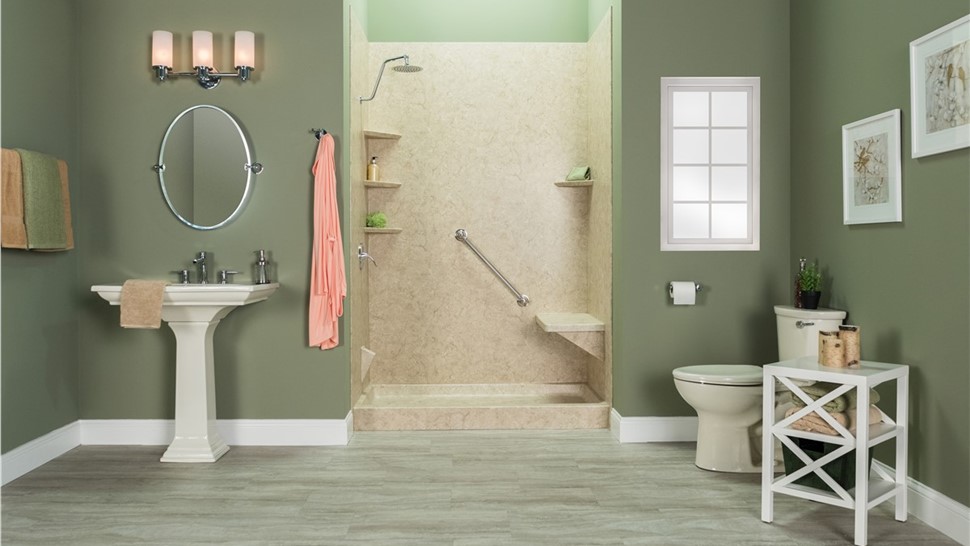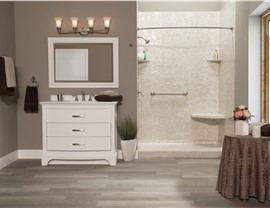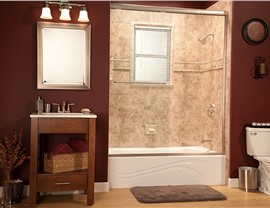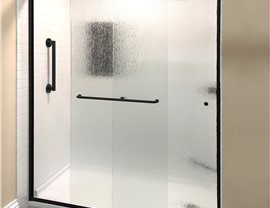Converting your bathroom can be a transformative project that significantly enhances your home’s functionality and aesthetics. For residents of Dyer, a well-planned bathroom conversion can bring modern conveniences and style to your home.
This step-by-step guide will help you plan and execute a successful bathroom conversion, ensuring you achieve the desired results.
Assess Your Needs and Goals
Start by assessing your needs and goals for the bathroom conversion. Consider who will use the space and how it will be used. Are you looking to create a more accessible bathroom for elderly family members, or do you want to add luxury features like a walk-in shower or a spa-like bathtub? Clearly defining your objectives will guide your planning process.
Set a Realistic Budget
Budgeting is a crucial aspect of any home improvement project. Determine how much you are willing to spend on your bathroom conversion. Consider the costs of materials, fixtures, labor, and any unexpected expenses that may arise. Having a clear budget will help you make informed decisions and avoid overspending.
Design the Layout
The layout of your new bathroom is essential for both functionality and aesthetics. If you’re converting a small space, consider space-saving solutions like wall-mounted sinks or compact fixtures. For larger bathrooms, you may have more flexibility to incorporate features like double vanities or separate shower and bathtub areas. Sketch out different layout options or consult with a professional designer to optimize the space.
Choose the Right Fixtures and Materials
Selecting the right fixtures and materials is key to achieving your desired bathroom look and functionality. Consider the following:
- Bathtubs and Showers: Decide between a traditional bathtub, a walk-in shower, or a combination of both. Walk-in showers are ideal for accessibility and a modern look, while bathtubs offer a relaxing retreat.
- Vanities and Storage: Choose vanities that provide ample storage and match your bathroom’s style. Wall-mounted cabinets and shelves can maximize space in smaller bathrooms.
- Flooring and Tiles: Select durable and water-resistant materials for flooring and wall tiles. Popular choices include ceramic, porcelain, and natural stone.
Plan for Plumbing and Electrical Work
Bathroom conversions often require changes to plumbing and electrical systems. It’s crucial to plan these aspects carefully to ensure safety and compliance with local building codes. Hiring licensed professionals to handle plumbing and electrical work is highly recommended to avoid costly mistakes and ensure the job is done correctly.
Consider Ventilation and Lighting
Proper ventilation is essential to prevent moisture buildup and mold growth in your new bathroom. Install an exhaust fan to maintain good air circulation. Additionally, consider both natural and artificial lighting options. Adequate lighting can enhance the overall ambiance and functionality of the space.
Final Thoughts
Planning a successful bathroom conversion involves careful consideration of your needs, budget, and design preferences. By following this step-by-step guide, Dyer residents can achieve a beautiful and functional bathroom that enhances their home’s value and comfort.
For expert advice and professional installation services, NWI Baths is a trusted local resource. For more information or a free estimate, contact NWI Baths.
Transforming your bathroom can be a rewarding project that adds both convenience and style to your home. With careful planning and the right professional support, your dream bathroom is within reach.






